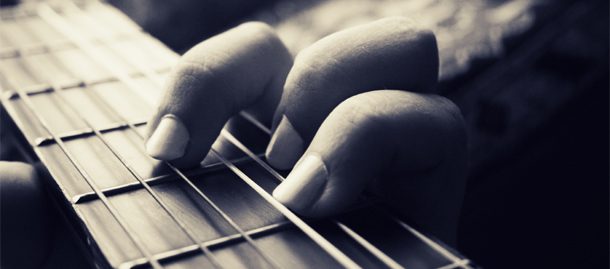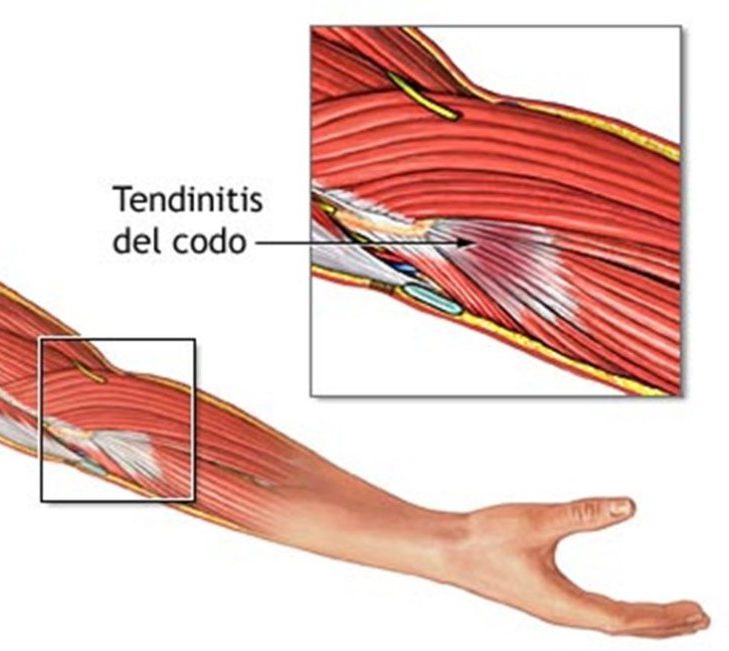
Hello my friends to one more article here at Metalpaths. This is the 2nd part of “Music And Health” subject which started last month. In the previous article we talked about the problems that may occur in our ears and back. You can read the article here. This month I made a huge research for all the health problems that may be caused to our hands mostly by the wrong position during practice but also from overplaying.
Lets go..!
WHAT DO WE REALLY KNOW?
That’s a very good question. What do we really know about our hands? Do we know all the problems that can be caused and put in danger our playing and health? Unfortunately, the answer is no! Most of my guitarist-friends that I asked were only aware of tendinitis which is only one of the issues that can happen to a guitarist. Trust me, its not the only one and neither the most dangerous!
So, below I mention some of the most dangerous issues you should know. Also you will have the opportunity to read a real story from a very good friend of mine: a well known guitarist who suffers of a complex neurologic condition called “Focal Dystonia” . I would like to thank publicly my good friend Mr. Christian Muenzner, guitarist of the bands Obscura, Spawn Of Possesion and Paradox for doing me such an honor sharing in my blog a personal story regarding his condition and how he managed to “deal” with it giving some useful information and advices.
Before moving on I would like to mention that: In case you feel some pain or discomfort in your hands or body during your practicing, I HIGHLY recommend you to stop practicing immediately, go to a doctor and have your condition checked. Don’t leave it, don’t overlook it cause you’ll probably make it worse!
KNOWN AND UKNOWN PROBLEMS
Tendinitis

Tendinitis (informally also tendonitis), meaning inflammation of a tendon, is a type of tendinopathy often confused with the more common tendinosis, which has similar symptoms but requires different treatment. (The suffix -itis denotes diseases characterized by inflammation.) The term of tendinitis should be reserved for tendon injuries that involve larger-scale acute injuries accompanied by inflammation.
Carpal Tunnel Syndrome
Carpal tunnel syndrome (CTS) is an entrapment median neuropathy, causing paresthesia, pain, numbness, and other symptoms in the distribution of the median nerve due to its compression at the wrist in the carpal tunnel. The pathophysiology is not completely understood but can be considered compression of the median nerve traveling through the carpal tunnel. Most cases of CTS are of unknown causes, or idiopathic. Carpal Tunnel Syndrome can be associated with any condition that causes pressure on the median nerve at the wrist. Some common conditions that can lead to CTS include obesity, oral contraceptives, hypothyroidism, arthritis, diabetes and trauma.
Treatment: Generally accepted treatments include: steroids either orally or injected locally, splinting, and surgical release of the transverse carpal ligament. There is no or insufficient evidence for ultrasound, yoga, lasers, B6, and exercise therapy. Early surgery with carpal tunnel release is indicated where there is clinical evidence of median nerve denervation or a person elects to proceed directly to surgical treatment. The treatment should be switched when the current treatment fails to resolve the symptoms within 2 to 7 weeks. However, these recommendations have sufficient evidence for carpal tunnel syndrome when found in association with the following conditions: diabetes mellitus, coexistent cervical radiculopathy, hypothyroidism, polyneuropathy, pregnancy, rheumatoid arthritis, and carpal tunnel syndrome in the workplace.
Trigger Finger
Trigger finger, trigger thumb, or trigger digit is a common disorder characterized by catching, snapping or locking of the involved finger flexor tendon, associated with dysfunction and pain. A disparity in size between the flexor tendon and the surrounding retinacular pulley system, most commonly at the level of the first annular (A1) pulley, results in difficulty flexing or extending the finger and the “triggering” phenomenon. The label of trigger finger is used because when the finger unlocks, it pops back suddenly, as if releasing a trigger on a gun
Treatment: Injection of the tendon sheath with a corticosteroid is effective over weeks to months in more than half of patients. When corticosteroid injection fails, the problem is predictably resolved by a relatively simple surgical procedure (usually outpatient, under local anesthesia). The surgeon will cut the sheath that is restricting the tendon.
Focal Dystonia
Focal dystonia is a neurological condition that affects a muscle or group of muscles in a specific part of the body causing involuntary muscular contractions and abnormal postures. For example, in focal hand dystonia, the fingers either curl into the palm or extend outward without control. In high level musicians, focal hand dystonia is referred to as musician’s dystonia and focal dystonia in sports is commonly referred to as (the) yips. It is believed that all adult onset dystonias are a product of combined genetic factors and environmental modifiers.
CHRIS MUENZNER’S STORY

I left Christian’ s experience for the end. With no further additions or editing below you can read the story written by Chris himself:
“As some of you may know, I suffer from a complex neurologic condition called “Focal Dystonia” since a couple of years, which affects the fingers on my left hand (my fretting hand on the guitar). Since most people I met have not really heard of this condition and do not really know what it is, let me give you a short explanation (there are many more details, but this would be too much content for this article):
Focal dystonia is a movement disorder which manifests itself as a loss of voluntary motor control in extensively trained muscles. Basically this happens because of a re-mapping of your neural pathways that affects specific tasks that your body performs. Often this disorder is progressive, meaning that the condition gets worse, for many to the point that they can’t perform anymore at all. In my case, whenever my index finger puts pressure on the string these days, my middle finger starts to curl backwards to the point that it basically touches the palm of my left hand, as you can see happening in all live videos of mine from the last few years. This makes the finger almost completely unusable, except for my chordal playing. Also the pinky spreads out a little bit, and when I force my middle finger to stay in place, the index finger gets stiff. No need to mention that this makes playing the guitar, especially complex and highly technical stuff as I like to play in my own and my band’s music, very difficult. Many things I recorded before the onset of the disorder have become undoable by now, so I had to change and adapt my technique a lot, which is why you can often see me do index finger slides and lots of multi finger tapping to replace left hand legato lines and sweeping arpeggios. I recorded 4 albums with the disorder so far and managed to find my own ways to still be able to play the stuff I want to play, but it was not an easy path, and a very frustrating one.
Now, the ultimate question is, how and why does this disorder come about, and what can be done about it?
So far, noone really knows exactly why one musician gets it and another doesn’t, but there are a few tendencies and certain behaviours prior to the condition which all people who suffer this condition have in common. To cut a long story short and simplify it a little bit here, one thing all have in common is being too perfectionistc and practicing too much, while ignoring aspects such as their emotional state or warning signals which the body gives, for example tensions occuring in other parts of the body. This may sound weird now, we have to practice a lot in order to get really good, and thousands of musicians practice a lot, work very hard and never develop a dystonia. Well, it’s about how you do it.
One behaviour you should avoid at any cost is practicing the same movement patterns on rapid speeds for a long time straight. I used to practice the same runs (most of which contained the 1 2 finger combination which I can’t do anymore at all now) on very high tempos with the metronome sometimes for hours straight, and I used to do this for years. This confuses our brain and can cause brain maps (the areas in which for example our seperate fingers are represented) to overlap, so that whenever I put pressure on my index finger now, neurons misfire and cause the middle finger to contract involuntarily.
 You should not practice the exact same thing for longer then 15-20 minutes straight. Do a break after it, put the guitar down for a few minutes, then go to practice something else. You may come back to the same exercise later. It is not only about the quantity of the practicing, but also about the awareness of the whole of you. Do not only focus on the fingers. In order to move your fingers in a relaxed way, you need to relax also the bigger muscle groups, from the wrist over the elbow to the upper arm and even back to your shoulder. This inclusive approach also contains the breathing, and the awareness of your emotional state. A feeling of discomfort or pressure (there is a lot of competition in the guitar scene) can cause muscle tension you may not even be aware of. Avoid mental strains, try to be as relaxed as you can when you practice or perform. Whenever you feel some pain or tension as you practice, take it seriously. NEVER ignore it! These are warning signs your body gives you that you need to change something. Also, abandon the idea of dogmas, that for example your thumb has to be in one certain fixed locked up position as you play. This is false. We all differ in our anatomy and therefore we all move differently in order to be able to play certain things. Keep your thumb relaxed and allow it to move in order to keep your fingers relaxed!
You should not practice the exact same thing for longer then 15-20 minutes straight. Do a break after it, put the guitar down for a few minutes, then go to practice something else. You may come back to the same exercise later. It is not only about the quantity of the practicing, but also about the awareness of the whole of you. Do not only focus on the fingers. In order to move your fingers in a relaxed way, you need to relax also the bigger muscle groups, from the wrist over the elbow to the upper arm and even back to your shoulder. This inclusive approach also contains the breathing, and the awareness of your emotional state. A feeling of discomfort or pressure (there is a lot of competition in the guitar scene) can cause muscle tension you may not even be aware of. Avoid mental strains, try to be as relaxed as you can when you practice or perform. Whenever you feel some pain or tension as you practice, take it seriously. NEVER ignore it! These are warning signs your body gives you that you need to change something. Also, abandon the idea of dogmas, that for example your thumb has to be in one certain fixed locked up position as you play. This is false. We all differ in our anatomy and therefore we all move differently in order to be able to play certain things. Keep your thumb relaxed and allow it to move in order to keep your fingers relaxed!
If you follow these advices, the risk you develop a dystonia is much lower. In case you feel you may show some of the symptoms, get a diagnosis from a neurologist, preferably one who is experienced with musicians’ diseases. I went to see 4 doctors and got wrong diagnoses before I really knew what was going on with my left hand and why my technique was falling apart, it was in fact almost 3 years after I noticed the symptoms affecting my playing for the first time.
The big struggle with Focal Dystonia is that it is officially medically incurable. Botox injections in your flexor muscles or Parkinson medications can help to diminish the symptoms that you can play a lot of stuff again which you couldn’t without it, but it won’t cure the origin of the disorder. However, along my path of studying the disorder and learning as much about it as I can, I met a few people who completely overcame their condition and now play better than before. Some approaches that helped people to overcome it were learning techniques in the whole field of somatics (the study of human movement, the study of the coordination of mind and body in movement), like the Alexander technqiue, the Feldenkrais technique or Body Mapping. Some even have cured it by only working on their emotional state when approaching the instrument. This may sound a little bit esoteric to some, but it is a scinetifically proven fact that there is a direct connection between our emotional state (our mind) and the muscular tension in our bodies. I am only scratching the surface here and there is a lot more to know about it. If you are curious, you may want to check out this website for more in depth information on the issue: http://www.focaldystonia.co.
In case you are dealing with any playing problems of any kind, I would recommend everyone to check out this website: www.thepoisedguitarist.com
I am currently learning the Feldenkrais technique with a violin player who overcame focal dystonia herself, as well as learning Body Mapping via skype from a classical guitar player who recovered from the condition. I already felt the positive effetcs, but it will be a long time until the measures (hopefully) make their way into my playing on an automised basis and work in every situation, as usually the contractions are worse when I am recording or playing in front of someone who is staring at my fingers than if I play just for myself without any pressure. I am also working with one of the world’s leading neurologists in the field. With the help of Botox injections I can temporaly restore some of my chops and reduce the contractions to a certain level, but I am still doing the retraining measures, as this is the only way to completely overcome the dystonia if I’m lucky.
That being said, practicing a lot in order to be the best that you can is a good thing if that’s what you want to achieve, but never forget that music is fun and something good, it’s not an olympic discipline. Be aware of your whole self, listen to your body. Have fun and don’t hurt yourself. In case you already have some problems, good luck along the way, and never give up believing that you can overcome this!
best wishes,
Christian Muenzner”
Τhank you for reading this article guys and girls. I hope you had some benefit from it. Take care and stay healthy!
See you next month,
Gus Drax
Links :
www.facebook.com/christian.
www.facebook.com/
www.facebook.com/
www.facebook.com/paradoxthrash
